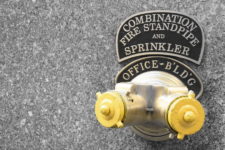The introduction of Local Laws 114 and 115 (linked here) of 2018 added even more requirements for FDNY-related postings and distributions at residential properties. But how do all these updates and new rules fit in with past requirements?
We’ve put together the ultimate list of FDNY-related documentation – what each item is, what you’re required to do with it, and when you’re required to do it.
We’ve also listed requirements for all Emergency Planning and Preparedness applications, which are now being filed with the FDNY online.
Read on to understand the difference between these requirements, and what you’ll be responsible for:
Fire and Emergency Preparedness Guide
The Fire and Emergency Preparedness Guide (or FEP Guide, for short) is the large swath of fire safety information sent out to residents, oftentimes during safety notice mailings season.
The FEP Guide is split into two parts – Part I is building-specific (example here – filled out by your team for each building in your portfolio), and Part II is drafted by the FDNY, focused on general safety tips and directions. In 2018, Part II of the Guide received a massive overhaul and a name change – here’s an example of what the latest version looks like.
The FEP Guide has to be provided to tenants at least once every three calendar years, and can be delivered in a few ways, including first class mail, hand-delivery, or email. If you use SiteCompli for annual safety notice mailings, it’s part of the annual mailing package to each tenant. In addition to mailings season delivery, the Guide can also be delivered during Fire Safety Week in October. But no matter when you choose to deliver it, or how, records of delivery and a copy of the Guide itself need to be kept and provided to the FDNY upon request.
Besides the regular, ongoing delivery, Guides must also be provided to all residents in the case of a material change in building conditions (not including temporary repairs or maintenance work). It must also be provided to new residents at the time of lease, sublease, or other occupancy agreements. Likewise, new staff members must receive a copy no later than the date they commence performing work at the building.
Annual Fire and Emergency Preparedness Bulletin
The brand-new 2021 Bulletin (updated here this year) is meant to supplement information provided in the above Guide. The purpose of the Bulletin is to outline critical tips that differ from year-to-year in a briefer format (as opposed to the larger Guide, which may undergo revisions on a less frequent basis). You can view the FDNY’s final rule regarding the bulletin here.
The first iteration of the Bulletin was delivered to residents during the January 2020 mailings cycle, but will be updated annually.
Fire and Emergency Preparedness Notices
Unlike Guides and Bulletins (which require distribution on a regular basis), FDNY Notices must be posted in specific locations onsite. These postings more directly inform residents of what to do in case of an emergency.
There are two basic types of Notices – combustible and non-combustible. Each type has different instructions in the case of an emergency, so it’s important to know which your building requires.
Notices must remain visible every day, year-round, so there is no set season or due date for making sure they’re up. Part of owners’ responsibilities under the law includes maintenance upkeep (replacing missing or damaged Notices), so it’s important to regularly check these as part of an ongoing routine. NEW – as of 2021, the FDNY now requires owners to begin an inspection program or distribute certifications to tenants to confirm Notices are being maintained properly. Find out more here.
You can see the detailed specifics for preparing, posting, and maintaining Notices here – including sign size, font size, and more.
Emergency Preparedness/Evacuation Planning Checklist
Like the Bulletin, the Checklist is a brand-new requirement that must be delivered to residents starting in 2020.
The Checklist aims to assist residents in outlining a more personalized evacuation plan, including those with “limited mobility or other disabilities or special needs, key issues relative to their ability to evacuate the building.” You can see a sample Checklist here, at the very end of the new rule (pages 13 – 16).
The comments attached to the new rule note that for this year only, the checklist must be distributed by April 30, 2020. In future distribution cycles (after next year), the Checklist should be delivered with the Guide.
Close The Door Notices
The last new requirement (for now) are the “Close The Door Notices.” This posting is separate from the FEP Notice, specifically reminding residents to close doors behind them to prevent the spread of fires.
As with the FEP Notice, the rule outlines specifics for printing and posting the Door Notices (colors, graphics, and font). You can also use the sample Notice provided at the end of the rule (page 17).
Notices must be posted and maintained on the public hallway corridor side of each stairwell door in the building. Per the comment period, postings of this Notice are not required in the lobby. Postings are also not required for an open stair. Of course, any missing postings must be promptly replaced.
According to the FDNY, the fully revised rule will go into effect on November 15th, 2019. In order to avoid violations or penalties, you should have these Notices posted in advance of that date.
Emergency Planning and Preparedness Applications
In addition to posted Notices and provided documentation, the FDNY also requires specific paperwork to be filed for different types of properties. As of October 15, 2019, these four applications or any amendments must now be filed online with FDNY Business.
If you’re not sure which of the following documents needs to be filed for your building, or when they should be filed, you can reach out to PlanHelp@fdny.nyc.gov – give them your building specifics, and their team will fill you in on everything you need to know (they’re really responsive, too!). You can also visit the FDNY Citizen Access site, where applications can be initiated and searched for.
Here are links to more details on the following filings:
Comprehensive Fire Safety and Emergency Action Plan
Required for Group B occupancy office buildings or parts thereof:
- Greater than 6 stories in height; or
- Greater than 75 in height; or
- Occupied or designed to be occupied by more than 500 persons on one or more floors, including street level, or by more than 100 persons on one or more floors other than street level; or
- Equipped with a fire alarm system with voice communication of the type required in Class B or M occupancies, regardless of whether such system is required in such building space; or
- Ordered by the department, based upon a determination that compliance is required in the interest of public safety given the location, use, or occupancy of the building
- Exception: Office buildings that have lawfully installed an interior fire alarm system
Required for:
- New building and alteration applications for covered buildings set forth in section 28-109.2
Fire Safety and Evacuation Plan
Required for:
- Occupancies and buildings as set forth in section 404.2.1 of the 2008 Fire Code
- Group B office buildings and occupancies
High-Rise Residential (Non-Sequential Floor Numbering) BIC – Building Identification Card
- 3 RCNY 408-01 requires a Building Owner to electronically file a BIC
- BIC must identify non-sequential (and/or other non-standard) floor numbering in buildings (or parts thereof) 150 feet or more in height that are classified in Occupancy Group R-2
- Applies to buildings with vanity floor numbering, as well as those that skip a floor (for example, no 13th floor)




